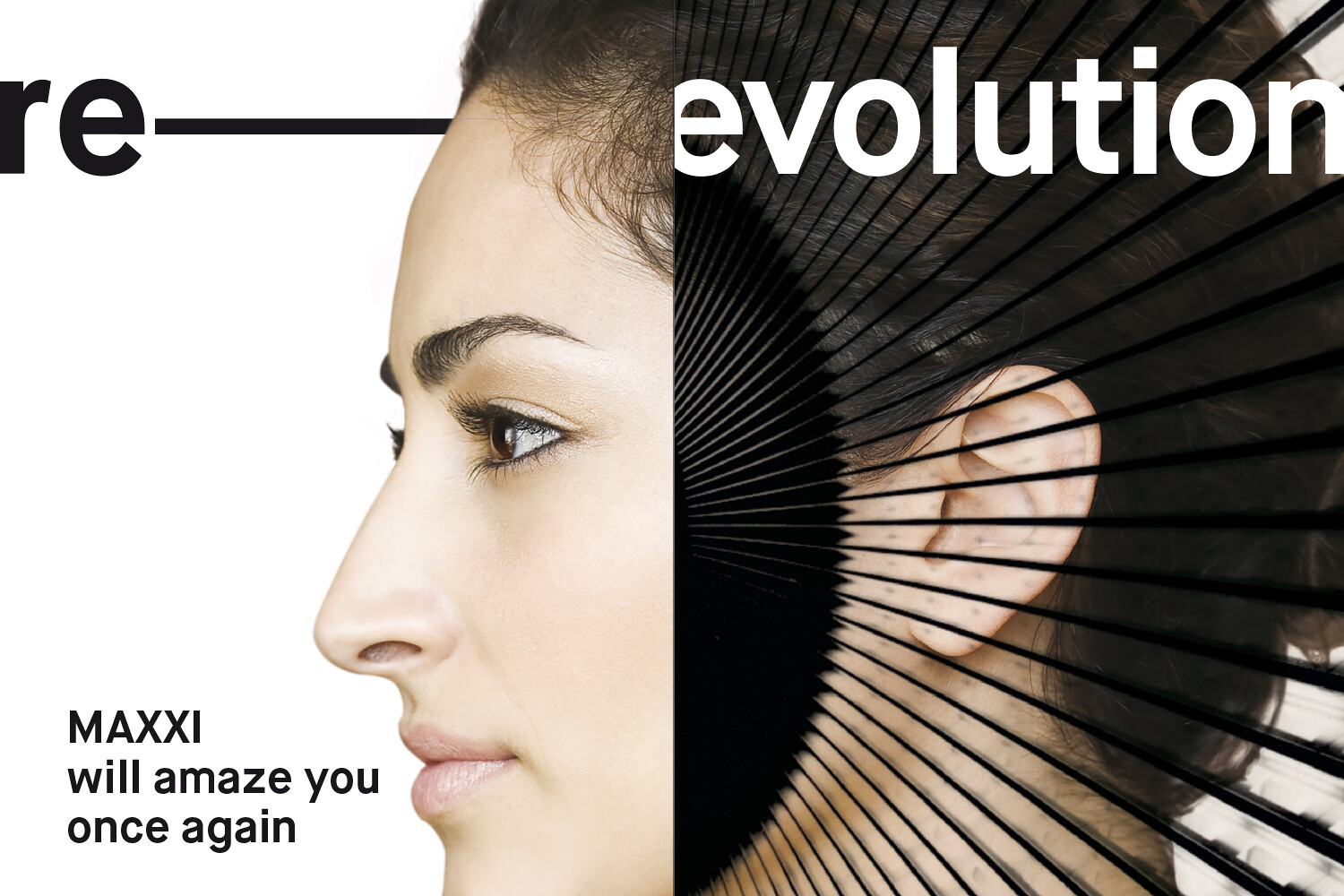Via Guido Reni, 4/a
00196 Roma Italy
Italy
Hours: Tuesday–Sunday 11am–7pm
T +39 06 32486
press@fondazionemaxxi.it
The permanent collection at the centre: tripling the spaces, a new presentation starting from the piazza, major installations and works never previously exhibited
New catalogues of the art and architecture collections
New video gallery
Even more services for the public
Admittance free for the whole of the ground floor*
From May 6, MAXXI will be RE–EVOLUTION: the museum is transforming and reconfiguring its spaces, reinforcing its identity and its public mission, starting with The Place to Be, the new hang of the permanent collection around which rotate all the changes and innovations.
MAXXI is becoming ever more welcoming, more accessible and more open to the city, with the whole of the ground floor free of charge and new services for the public. This project has been strongly supported by the President Giovanna Melandri, the Board of Directors, the Artistic Director Hou Hanru and the directors of MAXXI Architettura and MAXXI Arte, Margherita Guccione and Bartolomeo Pietromarchi, curators of The Place to Be.
“With this project we are crossing the finishing line of the marathon we started years ago”, says Giovanna Melandri. “We want to continuously enrich the museum’s free cultural offer and we are doing so by focusing on the permanent collection, the identifying heart of the museum and a public resource open free of charge from Tuesday to Friday. We have worked and will continue to work to enrich it, conserve it and render it ever more accessible. This is the ‘re-evolution’ of a great cultural institution, a laboratory for the future and memory of the contemporary.”
This presentation starts right from the piazza—which features large-scale new installations by Ugo Rondinone, Mircea Cantor and Elisabetta Benassi—and extends to the interior without interruptions, throughout the ground floor and part of the first floor, with large-scale installations, works exhibited for the first time, major works from contemporary masters, temporary shows and analyses dedicated to the artists in the collection.
In Gallery 1, over 60 works of art, architecture and photography, with works from the Sixties through to the most recent period dialogue amongst themselves and with the sinuous spaces of Zaha Hadid. After having crossed the suspended textile forest by West 8, the visitor is welcomed by the monumental wall drawing #1153 Ripples by Sol Lewitt, installed on a large wall in the museum for the first time. Moving on, visitors encounter among other works by Carl Andre, Vincenzo Agnetti, Tomas Saraceno, Mario Merz, Kara Walker, Gilbert & George, Gianfranco Baruchello, Letizia Battaglia, Elisabetta Catalano and William Kentridge. Among the architectural works, on show for the first time are the projects by among others Dominique Perrault, Álvaro Siza, Sergio Musmeci, Pier Luigi Nervi and Giuseppe Perugini. And then there are the 46 photographs that make up 72 Hours in Rome by Helmut Newton, his only “urban landscape” photographic project. The itinerary continues in the Archives Centre with the project entitled Interiors: 10 architects and studios featured in the MAXXI Architettura collections, including Aldo Rossi, Carlo Scarpa and OBR. The ground floor—to which *entry is free from Tuesday to Friday and every first Sunday of the month—also houses a permanent video gallery realised in collaboration with In Between Art Film; a space devoted to the Archive of the Incontri Internazionali d’Arte; a new teaching workshop that also offers the Kids Museum, an exploration of the works in the collection designed for children, with the support of BNL – Gruppo BNP Paribas.
The exhibition continues on the first floor, in Gallery 2 and the new hall dedicated to Claudia Gian Ferrari who, in 2010, donated an important selection of works from her personal collection to the museum. These spaces house temporary exhibitions and analyses of the artists in the collection: first up is a show devoted to Bruna Esposito (through to September 2017). The itinerary then continues with two analytical shows focusing on the themes of the city and the home. In the first, entitled The Other City, a series of drawings of architecture “imagined” for Rome by Franco Pierluisi act as counterpoints to models of built works by Paolo Portoghesi, Renzo Piano and Massimiliano Fuksas. Then there are a photographic work by Gea Casolaro and a work by Liliana Moro. The analysis of the home, entitled No Place Like Home, feature the full scale reconstruction of White U by Toyo Ito, a project by Aldo Rossi, the photos by Armin Linke and Helene Binet, an installation by Luca Maria Patella and works by Francesco Arena, Micol Assaël, Ilya and Emilia Kabakov, Domenico Gnoli, Michelangelo Pistoletto and Oscar Tuazon. The offer is completed by the reading room created with the support of MINI to house seminars and meetings with artists featured in the collection.
The Place to Be is also marked by the publication of the amended Catalogue of the MAXXI Arte Collection, published by Quodlibet and organized in two parts: the general catalogue of works and the section devoted to prizes, commissions and thematic presentations. The e-book of the MAXXI Architettura Catalogue will be also be available and will include the new acquisitions from 2016–17.
The creative revolution also passes by way of the reconfiguration of the internal reception areas, starting with TYPO, the new cafeteria-bookshop housed in the hall of the former barracks that, with its accesses onto Via Guido Reni creates a new entrance to the museum foyer. The cafeteria-bookshop will also be open outside the museum opening times. Facing onto Piazza Alighiero Boetti is instead LINEA, the new restaurant curated by the Michelin-starred chef Cristina Bowerman.

